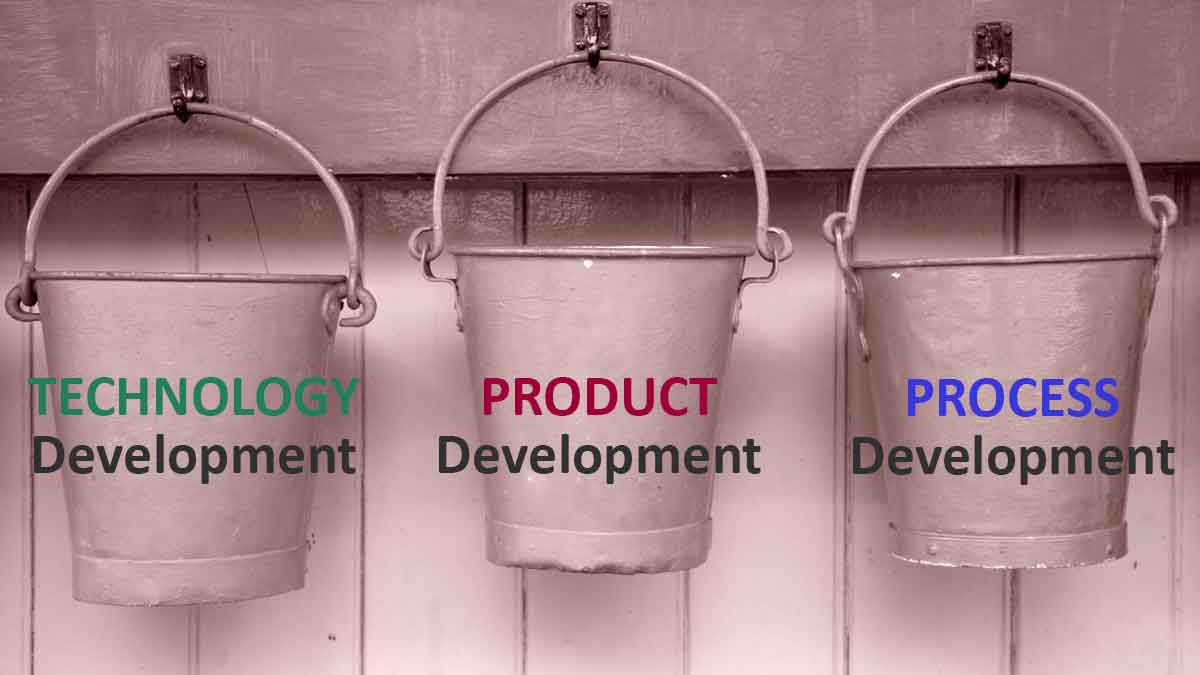Will you win because your R&D people are 20% smarter than the competition’s? If that logic sounds shaky, here’s a suggestion: What if your R&D worked only on problems customers truly cared about… while competitors kept guessing what to work on? Would that be a competitive advantage? This is easier than you think… but maybe you’d rather try to hire geniuses.
More in white paper, www.catchtheinnovationwave.com (page 4)
Bucket #1 is Technology Development… science-facing innovation that turns money into knowledge. Bucket #2 is Product Development… market-facing innovation that turns knowledge back into money. Bucket #3 is Process Development… optimizing the production of existing products to make money more efficiently. Don’t focus on customer needs for Bucket #1 (it’s too early) or #3 (it’s too late)… but do this very well for Bucket #2. In the entire money-making process, this is your greatest point of leverage today.
More in article, Target Customer Needs and Win
Years ago, a study by APQC found the most successful teams invest 20+% of their total new-product work in the front-end… while most teams spend 10% or less here. Roughly speaking, a Market Case requires about 3 person-months of effort, while a full Business Case needs about 6 person-months. So if you “do the math” for 20% in the front-end, you should require a Market Case for projects needing 1 person-year of development, and a Business Case for those needing 2+ years.
More in article, Business Case Excellence: The 12 Key Components
“Proven right” breeds confirmation bias; “be right” inspires a search for truth. In new product development, “proven right” seeks to validate the supplier’s ideas; “be right” explores customers’ worlds seeking what others have missed. “Proven right” results in squandered R&D spending and missed opportunities; “be right” in delighted customers, premium pricing, and pleasant financial review meetings.
More in e-book, Leader’s Guide to B2B Organic Growth
Years of research by Booz Allen Hamilton have shown no correlation between how much you spend on R&D and how well you perform over the long term. A better strategy? Understand what customers want… so your R&D doesn’t develop great cures for no known diseases.
More in article, The Inputs to Innovation for B2B
You’re developing your customer’s new product. It’s like this: “Mr. Customer, we’ve assembled a team aimed at developing something you’ll love. As you can see, we even brought a lead R&D person with us to listen to you. So can you tell us everything you think we should know before we going into our labs? We want to get this right so the innovation makes you a hero at work.”
More in article, Reduce Bias in Voice of the Customer
After qualitative interviews, seek customer ratings on key outcomes: “How important is abrasion resistance on a 1-10 scale? And how satisfied are you today with abrasion resistance on a 1-10 scale?” This lets you converge with confidence on only those outcomes customers care about… those with Market Satisfaction Gaps over 30% (important and unsatisfied).
More in white paper, Catch the Innovation Wave (page 11).
Companies that want differentiated products often behave the same as competitors. They can’t say, “Our R&D staff is 20% smarter than competitors’, so our products usually win.” But they could win by understanding customer needs better than competitors… letting them “aim” their R&D brainpower much better. Be different to differentiate.
More in article, Do You Really Interview Customers?
Will you win because your R&D people are 20% smarter than the competition’s? If that logic sounds shaky, here’s a suggestion: What if your R&D worked only on problems customers truly cared about… while competitors kept guessing what to work on? Would that be a competitive advantage? This is easier than you think… but maybe you’d rather try to hire geniuses.
More in white paper, Catch the Innovation Wave (page 4)









